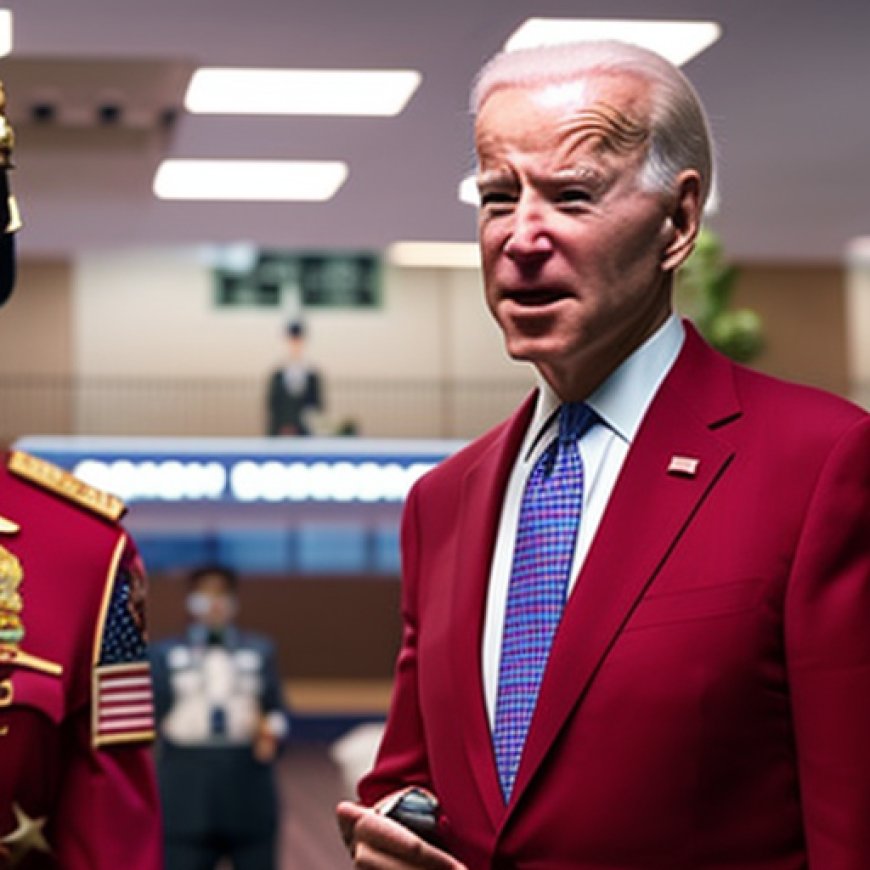Biden admin to China: Hands off our tech but we’ll take your tourists
Biden admin to China: Hands off our tech but we'll take your tourists POLITICO


The Biden administration’s efforts to attract Chinese tourists

Introduction
The Biden administration is actively working to encourage Chinese tourists to visit the United States again, despite increasing anti-China sentiment and tensions between the two countries. The COVID-19 pandemic has caused a significant decline in Chinese travelers and students coming to the U.S., impacting the economy. Commerce Secretary Gina Raimondo emphasized the potential economic benefits of restoring Chinese tourism, stating that a return to pre-pandemic levels would generate $30 billion in GDP and create over 50,000 American jobs.
Efforts by the Biden Administration
Commerce Secretary Gina Raimondo is leading the Biden administration’s efforts to revive Chinese tourism. She recently met with China’s Culture and Tourism Minister Hu Heping, where they agreed to hold the 14th U.S.-China Tourism Leadership Summit in China next year. This summit aims to strengthen bilateral relations and promote tourism between the two countries. However, attendance by Raimondo and Heping has not been confirmed yet.
Importance of Chinese Tourism
Chinese visitors, including tourists and students, played a crucial role in the U.S. travel economy before the pandemic. They were the highest-spending travelers and one of the largest groups of foreigners visiting the United States. However, Chinese spending in the U.S. dropped significantly during the pandemic, from $34 billion in 2018 to $11.4 billion in 2021. Although it slightly rebounded to around $14 billion last year, education remained the main expenditure category.
Challenges and Obstacles
Several difficulties need to be addressed to restore Chinese tourism to previous levels. These include the limited number of direct flights between China and the U.S., high flight prices, and the cumbersome U.S. visa application process. The Chinese Embassy in Washington also urged the State Department to adjust its travel advisory against U.S. citizens traveling to China, citing the need for improved bilateral relations.
Impact on California
Chinese tourism is particularly important for California, which used to welcome over half of the 2.8 million Chinese travelers annually before the pandemic. The decline in Chinese tourists has had a devastating impact on local economies, such as family-owned restaurants and hotels that relied on contracts with Chinese tour groups. The Biden administration’s efforts to stabilize relations with China are welcomed by California representatives, but concerns about increased tensions between the two countries remain.
Pandemic’s Impact on Travel
The COVID-19 pandemic severely disrupted travel to and within the United States, causing a significant decline in domestic and international trips. The loss of 4.4 million jobs in the travel and tourism industry accounted for nearly half of the overall employment decline in the country. While Beijing has lifted its strict zero-COVID policy, temporary travel restrictions were imposed by the U.S. government due to a spike in cases. However, these restrictions have been lifted, allowing for the resumption of normal travel.
Efforts to Boost Chinese Tourism
Efforts are underway to boost Chinese tourism, including increasing the number of weekly passenger flights between the U.S. and China. Chinese carriers have agreed not to fly over Russia to ensure fair competition with American carriers. Visa delays are another obstacle that needs to be addressed, as wait times have increased to 160 days. The U.S. travel industry also calls for an extension of the waiver that allows the renewal of 10-year visas for Chinese visitors without an in-person interview.
Impact on Education
Chinese students have been a significant source of revenue for U.S. colleges and universities. However, enrollment from China dropped by 22% in the 2021-22 academic year, resulting in a loss of approximately $15 billion in revenue for American higher learning centers. The decline in Chinese student enrollment is a concern for California institutions, which now need to rebuild their enrollment numbers.
Conclusion
The Biden administration’s efforts to attract Chinese tourists and students are aimed at reviving the U.S. travel economy and strengthening bilateral relations. However, challenges such as limited flights, visa delays, and geopolitical tensions need to be addressed for a full recovery. Restoring Chinese tourism is crucial for California and other U.S. hotspots, as it contributes significantly to local economies.
SDGs, Targets, and Indicators
1. Which SDGs are addressed or connected to the issues highlighted in the article?
- SDG 8: Decent Work and Economic Growth
- SDG 10: Reduced Inequalities
- SDG 17: Partnerships for the Goals
2. What specific targets under those SDGs can be identified based on the article’s content?
- SDG 8.9: By 2030, devise and implement policies to promote sustainable tourism that creates jobs and promotes local culture and products.
- SDG 10.7: Facilitate orderly, safe, regular, and responsible migration and mobility of people, including through the implementation of planned and well-managed migration policies.
- SDG 17.17: Encourage and promote effective public, public-private, and civil society partnerships, building on the experience and resourcing strategies of partnerships.
3. Are there any indicators mentioned or implied in the article that can be used to measure progress towards the identified targets?
- Indicator for SDG 8.9: Number of jobs in tourism sector as a proportion of total jobs.
- Indicator for SDG 10.7: Number of visas issued for travel and study purposes.
- Indicator for SDG 17.17: Number of international tourism partnerships established.
Table: SDGs, Targets, and Indicators
| SDGs | Targets | Indicators |
|---|---|---|
| SDG 8: Decent Work and Economic Growth | Target 8.9: By 2030, devise and implement policies to promote sustainable tourism that creates jobs and promotes local culture and products. | Indicator: Number of jobs in tourism sector as a proportion of total jobs. |
| SDG 10: Reduced Inequalities | Target 10.7: Facilitate orderly, safe, regular, and responsible migration and mobility of people, including through the implementation of planned and well-managed migration policies. | Indicator: Number of visas issued for travel and study purposes. |
| SDG 17: Partnerships for the Goals | Target 17.17: Encourage and promote effective public, public-private, and civil society partnerships, building on the experience and resourcing strategies of partnerships. | Indicator: Number of international tourism partnerships established. |
Behold! This splendid article springs forth from the wellspring of knowledge, shaped by a wondrous proprietary AI technology that delved into a vast ocean of data, illuminating the path towards the Sustainable Development Goals. Remember that all rights are reserved by SDG Investors LLC, empowering us to champion progress together.
Source: politico.com

Join us, as fellow seekers of change, on a transformative journey at https://sdgtalks.ai/welcome, where you can become a member and actively contribute to shaping a brighter future.







